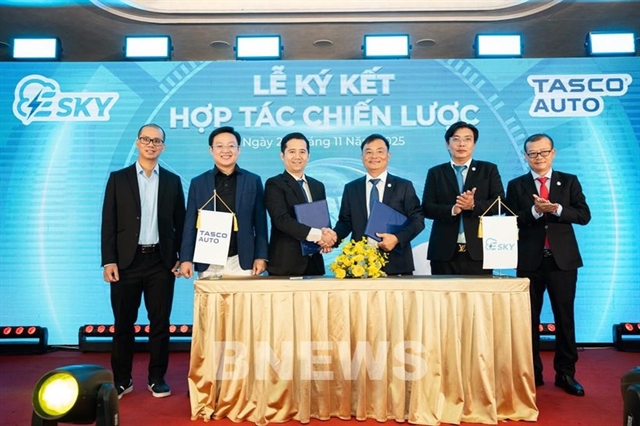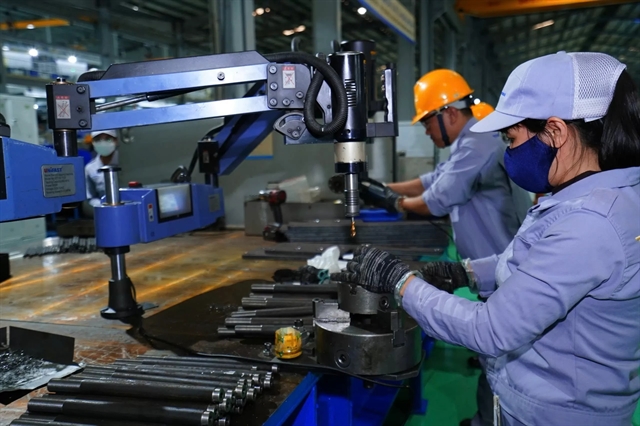 Economy
Economy


|
| Wokers of a factory in Quảng Ninh Province. — Photo baoquangninh.vn |
HÀ NỘI — The S&P Global Vietnam Manufacturing Purchasing Managers' Index (PMI) declined to 48.9 in June, down from 49.8 in May, marking the third straight month below the 50.0 threshold that separates expansion from contraction.
This drop signals a modest deterioration in business conditions as the first half of 2025 comes to an end.
In its July 1 report, S&P Global highlighted that Vietnamese manufacturers faced deteriorating demand conditions in June, with export orders notably impacted. Panelists cited US tariffs as a key factor behind the sharp decline in new overseas business. As new orders fell, companies reduced employment, purchasing and inventory levels.
Despite these challenges, manufacturing production saw a slight increase, and business confidence improved during the month.
The overall health of the manufacturing sector weakened further in June, driven by a third straight monthly decline in new orders. Although new business decreased modestly, the rate of decline accelerated compared to May.
Export markets faced particularly severe demand challenges, with new overseas orders falling significantly more than total new orders. The contraction in new export business was the joint-fastest since September 2021, matching the pace seen in May 2023. Several industry respondents attributed the drop in export orders to US tariffs.
As the second quarter closed, manufacturers reduced stocks of both purchases and finished goods more sharply, marking the steepest declines in nine and five months, respectively.
Despite ongoing demand weakness, manufacturers continued to increase their production volumes in June. Output rose for the second month running, albeit only slightly and at a slower pace than in May.
Input costs increased in June, following the first decline in almost two years during May. That said, the rate of inflation was only slight and weaker than the series average. Where input costs rose, panellists linked this to material shortages and a depreciation of the đồng versus the US dollar.
Andrew Harker, Economics Director at S&P Global Market Intelligence, said: "June saw a worsening of international demand conditions for Vietnamese manufacturers as the impact of tariffs intensified. The steep drop in exports contributed to a further reduction in total new orders and led firms to scale back employment and purchasing.
"One positive from the latest PMI survey was that firms continued to expand their output, but this is unlikely to continue for long without an improvement in the demand situation.
"The first half of 2025 has been characterised by volatility and uncertainty, particularly around trade conditions. Business confidence has recovered somewhat in recent months, but positive sentiment is largely based on hopes for a more stable picture going forward. Whether that will indeed be the case remains to be seen." — VNS




